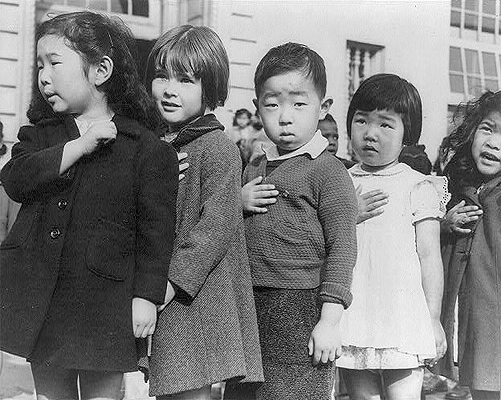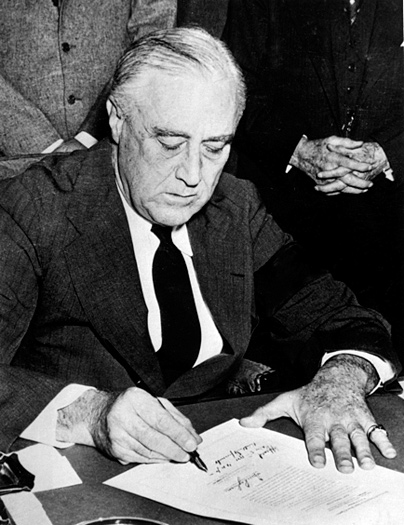
Source: JapaneseAmericansChildrenPledgingAllegiance1942, U.S. War Relocation Authority, Library of Congress
Think of your ethnicity for a moment. Now, imagine that every morning on the radio or television reporters are saying unkind things about people of your ethnicity. How do your neighbors, friends, and complete strangers treat you? If these unkind things were said over and over again for a year, would it change how people treated you? Think about your answer to that question as you read the following excerpt from the National Park Service website concerning the relocation of Japanese Americans:

Source: JapaneseAmericansChildrenPledgingAllegiance1942, U.S. War Relocation Authority, Library of Congress
The War Relocation Centers of World War II: When Fear was Stronger than Justice
"It all happened so quickly. The Japanese on the West Coast of the United States had made lives for themselves in spite of discrimination, but on December 7, 1941, everything changed. To panicked people after the attack on Pearl Harbor, every Japanese could be a potential spy, ready and willing to assist in an invasion that was expected at any moment. Many political leaders, army officers, newspaper reporters, and ordinary people came to believe that everyone of Japanese ancestry, including American citizens born in the United States, needed to be removed from the West Coast."
"In February 1942, President Franklin D. Roosevelt signed an executive order (a law that is signed by the president rather than passed by Congress) that moved nearly 120,000 Japanese and Japanese Americans into 10 isolated relocation centers in Arizona, Arkansas, California, Colorado, Idaho, Utah, and Wyoming. The temporary, tar paper-covered barracks, the guard towers, and most of the barbed-wire fences are gone now, but the people who spent years of their lives in the centers will never forget them."
-The War Relocation Centers of World War II: When Fear was Stronger than Justice, National Park Service.

Source: Franklin Roosevelt signing declaration of war against Japan, Abbie Rowe, National Archives
The majority of those detained were Japanese. However, Latin American governments collectively arrested at least 4,050 German, Italian, and Latin Americans. Most were shipped in dark boats to the United States and interned here. Their experience would be very similar to Japanese Americans who were relocated. There were far fewer German and Italian internees; therefore, they are less well-known. At least 2,000 German, Italian, and Latin American internees were later exchanged for Americans and Latin Americans held in Germany.
Here you see a flyer that advised Japanese Americans that they would have to move into the Relocation Centers. Think of Relocation Centers as very large prison camps.
![]() Click on the document and the main idea of each section will pop up.
Click on the document and the main idea of each section will pop up.
Activity: In your notes, write your responses to the following questions: